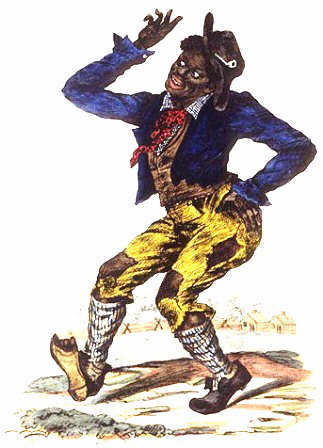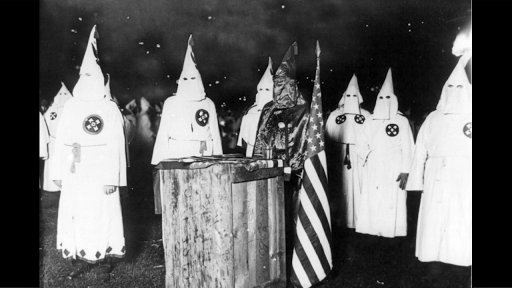The vote is the most powerful nonviolent change agent you have in a democratic society. You must use it because it is not guaranteed.
You can lose it.
-REP. JOHN LEWIS
When the Civil War ended, leaders turned to the question of how to reconstruct the nation. One important issue was the right to vote, and the rights of black American men and former Confederate men to vote were hotly debated.
In the latter half of the 1860s, Congress passed a series of acts designed to address the question of rights, as well as how the Southern states would be governed. These acts included the act creating the Freedmen’s Bureau, the Civil Rights Act of 1866, and several Reconstruction Acts. The Reconstruction Acts established military rule over Southern states until new governments could be formed. They also limited some former Confederate officials’ and military officers’ rights to vote and to run for public office. (However, the latter provisions were only temporary and soon rescinded for almost all of those affected by them.) Meanwhile, the Reconstruction acts gave former male slaves the right to vote and hold public office.
Congress also passed two amendments to the Constitution. The Fourteenth Amendment made African-Americans citizens and protected citizens from discriminatory state laws. Former Confederate states did not get congressional representation until they adopted this amendment. The Fifteenth Amendment guaranteed African American men the right to vote.
However, the rights established in the 14th and 15th Amendment were not secured, since racial segregation and white supperiority ideals were still present in most of the former Confederate states that would not bow to the institution they were willing to commit treason against, many of those states encated laws that full further separate the population based on racial differences.
Jim Crow Laws

The segregation and disenfranchisement laws known as “Jim Crow” represented a formal, codified system of racial apartheid that dominated the American South for three quarters of a century beginning in the 1890s. The laws affected almost every aspect of daily life, mandating segregation of schools, parks, libraries, drinking fountains, restrooms, buses, trains, and restaurants. “Whites Only” and “Colored” signs were constant reminders of the enforced racial order.
“It shall be unlawful for a negro and white person to play together or in company with each other in any game of cards or dice, dominoes or checkers.”
—Birmingham, Alabama, 1930
“Marriages are void when one party is a white person and the other is possessed of one-eighth or more negro, Japanese, or Chinese blood.”
—Nebraska, 1911
“Separate free schools shall be established for the education of children of African descent; and it shall be unlawful for any colored child to attend any white school, or any white child to attend a colored school.”
—Missouri, 1929
“All railroads carrying passengers in the state (other than street railroads) shall provide equal but separate accommodations for the white and colored races, by providing two or more passenger cars for each passenger train, or by dividing the cars by a partition, so as to secure separate accommodations.”
—Tennessee, 1891
African Americans turned to the courts to help protect their constitutional rights. But the courts challenged earlier civil rights legislation and handed down a series of decisions that permitted states to segregate people of color.
In the pivotal case of Plessy v. Ferguson in 1896, the U.S. Supreme Court ruled that racially separate facilities, if equal, did not violate the Constitution. Segregation, the Court said, was not discrimination.
“Equal but separate accommodations for the white, and colored, races.
Other pieces of legislation included within Jim Craw Laws, were Poll taxes and Literacy Tests.
Poll taxes discouraged those who could not afford to pay from voting and were a prerequisite to register to vote in Jim Crow states. Poll taxes disproportionately affected Black voters, a large population in the antebellum South.
Poll taxes continued into the 20th century. Literacy tests were also implemented to stop those who were uneducated from participating in the voting process. Literacy tests were administered at the discretion of those in charge of voter registration and often discriminated against African Americans. Literary tests asked civics questions such as “In which document or writing is the Bill of Rights found?” or “Name two of the purposes of the U.S. Constitution” as found in a 1965 Alabama literacy test. African Americans who took part in these test were descendants of slaves who were not allowed to read or write in several states due to anti-literacy laws.
White men who could not pass the literacy tests were able to vote due to the “Grandfather Clause” allowing them to participate in voting if their grandfathers voted by 1867.
That grandfather clause was ruled unconstitutional in 1915. Poll taxes were abolished in 1964 with the 24th Amendment and literacy tests were outlawed under the Voting Rights Act of 1965.
Yet, the discrimantion faced by African-Black Americans was not limited to “side-eyed” legislation that reminded them of the disperities they faced or supressed their efforts to exercise their constitutional rights. On the contrary, legislation and court rules like the above, motivated Sourtherners to further persecute Black Americans and perpetuate an environment of violence, hatred, and overall injustice.
The Origin of the Ku Klux Klan
Founded in 1865, the Ku Klux Klan (KKK) extended into almost every southern state by 1870 and became a vehicle for white southern resistance to the Republican Party’s Reconstruction era policies aimed at establishing political and economic equality for Black Americans. Its members waged an underground campaign of intimidation and violence directed at white and Black Republican leaders. Though Congress passed legislation designed to curb Klan terrorism, the organization saw its primary goal–the reestablishment of white supremacy–fulfilled through Democratic victories in state legislatures across the South in the 1870s.
White Southerners from all classes of society joined the Klan’s ranks. In the name of preserving law and order in a white-dominated society, Klansmen punished newly freed blacks for a variety of reasons, including behaving in an “impudent” manner toward whites. They whipped the teachers of freedmen’s schools and burnt their schoolhouses. But first and foremost, the Klan sought to do away with Republican influence in the South by terrorizing and murdering its party leaders and all those who voted for it.
In the time leading up to the 1868 presidential election, the Klan’s activities picked up in speed and brutality. The election, which pitted Republican Ulysses S. Grant against Democrat Horatio Seymour, was crucial. Republicans would continue programs that prevented Southern whites from gaining political control in their states. Klan members knew that given the chance, the blacks in their communities would vote Republican.
Across the South, the Klan and other terrorist groups used brutal violence to intimidate Republican voters. In Arkansas, over 2,000 murders were committed in connection with the election. In Georgia, the number of threats and beatings was even higher. And in Louisiana, 1000 blacks were killed as the election neared.



